Review for Pandemic
Introduction
With first The Sinking of Japan, and then 252: Sign of Life, it looks as if MVM is making inroads into the Japanese disaster movie genre, backed up with their feature film release for May 2011, Pandemic. While it's apparent that with their geologically volatile location in the world, and with the nuclear conclusion of World War II, Japan has always had a comparatively greater interest in the more apocalyptic, doom-laden scenarios for mass entertainment, perhaps with recent events, there may be a little discomfort with trying to elicit entertainment value from such offerings. You can rest your mind on that score with Pandemic though. The earth doesn't shake, the mountains don't spew forth lava, and the seas don't rise. This is a far more insidious and subtle an end of the world epic. This time it's disease that lays waste to mankind.
It's harder to anthropomorphise a virus or bacterium, than it is to imbue a meteor or tornado with a personal degree of menace. I guess that's why medical thrillers and disaster pics like Outbreak or The Andromeda Strain are few and far between. There is also something of a laissez faire attitude to the issue, certainly in the West. We've had our outbreaks of flu, both bird and swine, and small segments of the population did panic, but nowhere near as much as they did for Mad Cow Disease. The government appears to show more concern, and act with greater alacrity when it's the cows that come down with Foot and Mouth, than they do for the antibiotic resistant strains of MRSI that now apparently infest our wards. But above all, we have a collective 'muddle on through' attitude that seems not to take disease seriously. How many people have worked through a cold, or a bout with the flu, instead of resting up for a couple of days?
It seems the reverse is true in Japan, where there appears to be a pathological fear (pun intended) of the common cold. Admittedly my understanding of such matters comes mostly from popular entertainment, where the slightest hint of fever puts everyone on panic stations, and an actual cold has to be dealt with by a visit to the hospital. But when you look at news reports and documentaries that show everyday life in Japan, and the number of people who wears paper facemasks as a matter of course, to avoid transmitting or picking up infections, there has to be some truth to the difference in attitude. You can certainly imagine a movie about a viral epidemic getting greater play in Japanese cinemas come blockbuster season.
It's an outbreak of Avian Influenza in a village in the Philippines that starts the ball of doom rolling in Pandemic. The World Health Organisation is quickly on the scene in an attempt to contain it, among them official Eiko Kobayashi. The problem is that one man has left the village to go to a wedding, and he's taking a chicken as a wedding gift. Three months later, a poultry farm in Izumino, Tokyo is quarantined because of bird flu. At the same time, a couple with flu like symptoms attend a hospital in Izumino City. Advising them that it is probably just a cold, young doctor Tsuyoshi Matsuoka suggests they take a few days off work, and rest up. It isn't long before the couple are back, but what no one expects is for the disease to be so lethal. The man suffers a massive haemorrhage, and dies of multiple organ failure. And he's only the first. Soon, more and more cases are cropping up, the standard treatments aren't working, and the hospital winds up being quarantined. The WHO is put in charge of containing the outbreak, and it's Eiko Kobayashi who is on site at the hospital directing the containment. But her pragmatic and cold-blooded approach to the disease clashes with Matsuoka's more compassionate attitude to the patients. But the disease cares nothing for this. It spreads like wildfire through the country, the nation's infrastructure collapses, and the government orders all borders, both internal and external sealed. By doing so, they may just spare the rest of the world the disease, but they may also have sealed Japan's doom.
The Disc
The film gets a 1.85:1 anamorphic transfer, NTSC-PAL standards converted unfortunately, which is clear and colourful for the most part, a little soft at times, and with only a little of the usual ghosting and judder issues. It's perfectly fine to watch, even if it doesn't do the sets and the locations particularly full justice. Audio comes in DD 2.0 Japanese stereo form, which has a little presence to it. The subtitles are of the player forced variety, and only for the Japanese dialogue. That's a shame as some of the English is either poorly acted, or in a difficult to decipher accent. I think there was a problem in that not all of the on screen captions were translated, either that or the movie's opening credits last close to half an hour. The only extra feature on this disc is the theatrical trailer.
Conclusion
It's always about the little people in disaster movies. It's the small stories that matter. Oceans rise, nations fall, but as long as the cute Labrador gets out of the way of the fireball, then audiences have something to latch on to, to root for. With Pandemic, it has one of the highest off screen body counts of many a disaster film, millions infected, and a death toll that is a significant fraction of that. And as all the doom saying, what-if documentaries are apt to remind us, the pandemic is one natural disaster that we probably can't avoid, one that actually is inevitable. It should make this film rather more depressing, realistic viewing, and by the same token, it should make the characters in the film more interesting, easier to root for.
It doesn't. Pandemic is what I would term as one of those TV disaster movies of the week. It's the sort of movie, or indeed mini-series that gets shown on one of the Sky channels, or on Channel 5, with clunky scripts, wooden acting, and cheap CG effects. It's been a sort of backlash in recent years to the plethora of disaster movies in cinema, which at one point dominated the summer multiplexes. These Japanese disaster films still make it to cinema, and they have a little more budget when it comes to the effects. Certainly there are some uncanny images of a deserted Tokyo in the middle of the day, or vistas of a society in collapse, that rival anything that Hollywood can put out. But the clunky scripting is just the same, and the actor performances fail to engage. Certainly the way the film makes you invest in certain characters is pretty normal for the usual disaster flick, but the emotional manipulation is so overt, so blatant that it renders that investment pointless. There are signposts to every heart-wrenching moment that occurs in this film.
It's the inconsistencies and plot holes that annoy me. The hospital is quarantined, but our intrepid antagonistic hero doctors are free to move about when and where they want to, even stopping to have a couple of emotional moments during convenient rain showers. Society and infrastructure breaks down, but electricity stays on just fine, and communications keep working when they are needed. Our doctors can travel around the country with no problem. In fact, after the borders are closed, the heroes even manage a trip to South Asia. The small-scale problems in Japan never match the big CGI representations of devastation that are shown from a distance, a sign that the CG budget outstripped the practical effects budget. Then there are the deaths. Most people in this film die ugly, painful deaths, bleeding from everywhere, in obvious agony. The pretty people on the other hand have elegant, meaningful deaths; the only thing marring their bodies is a final, elegiac tear of blood. It's little plot holes and niggles like this that wouldn't have mattered so much if the characters were more interesting.
Pandemic would be acceptable as a TV movie, or a mini-series, but as a theatrical feature it's lacking. Perhaps that has to do with how innocuous and unthreatening a screen menace a virus is. I think it has more to do with the script and the performances though.
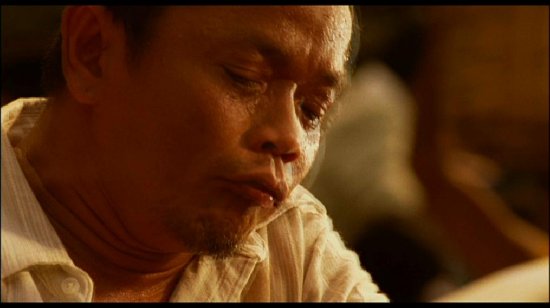
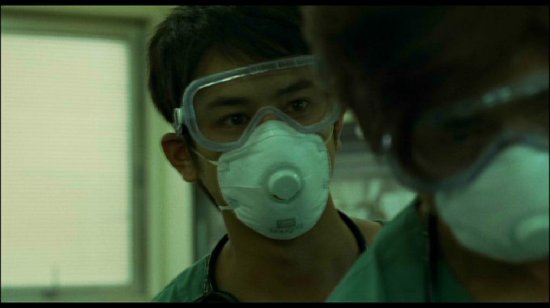
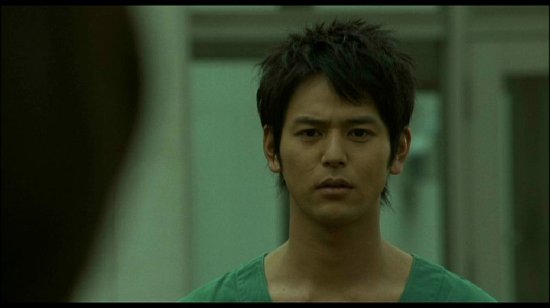
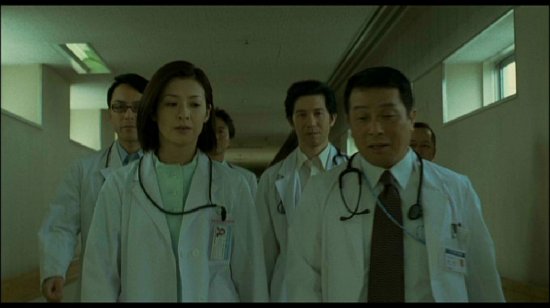
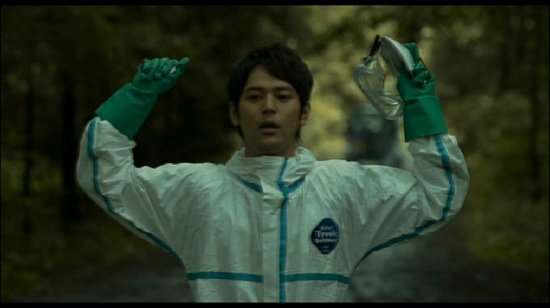
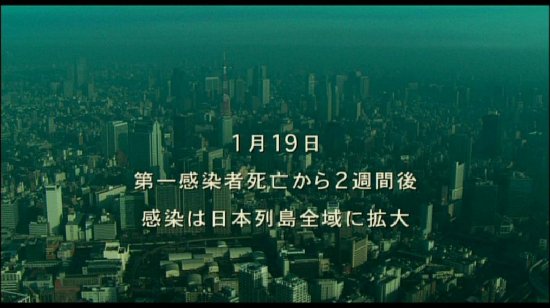
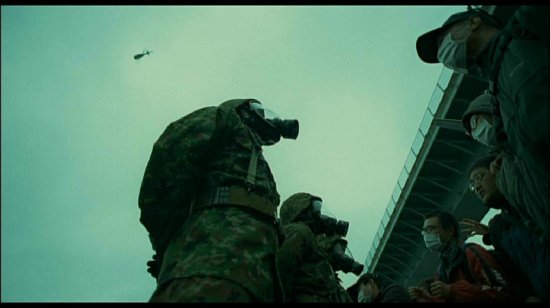

Your Opinions and Comments
Be the first to post a comment!